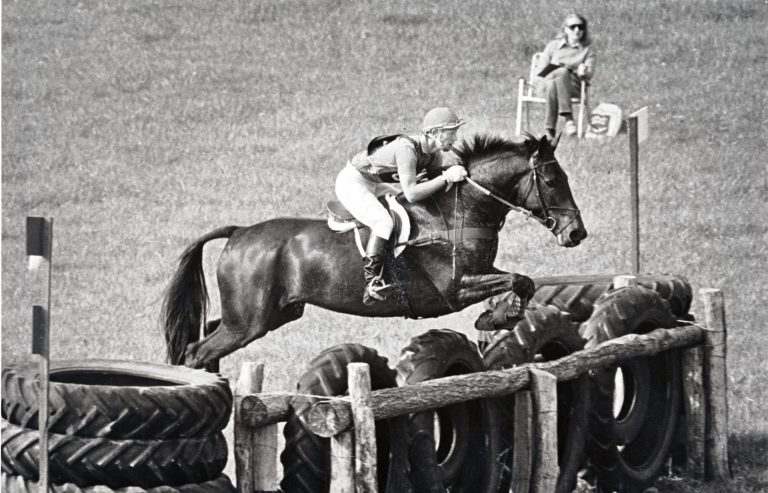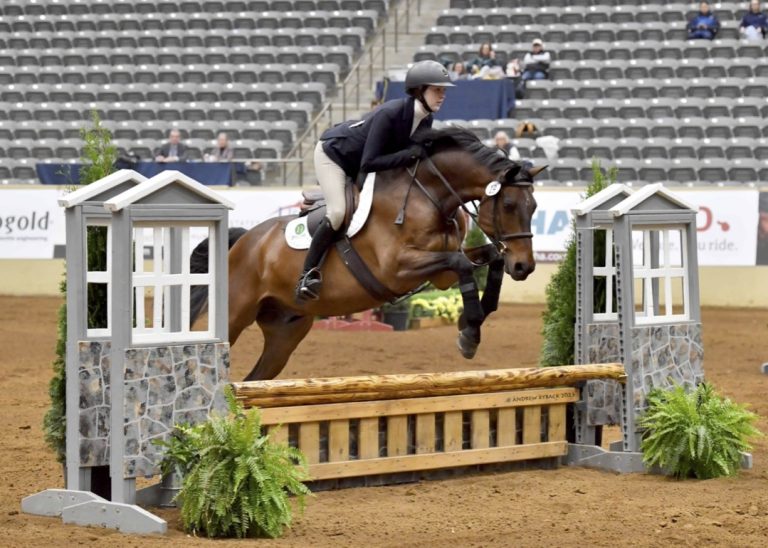The wind blurred my vision as I unknowingly careened toward a bog. I glanced over my shoulder at the row of sharp teeth snapping closer and closer to my right foot, as my riding companion Michael Turner shouted to me just in time. “Turn right!” Yanking on the rein toward the frothy-mouthed beast towing 4 feet of heavy-duty chain behind him, we skirted the bog in a flat-out gallop, gaining enough speed to outrun the dog that made Cujo look like your granny’s Bichon Frise.
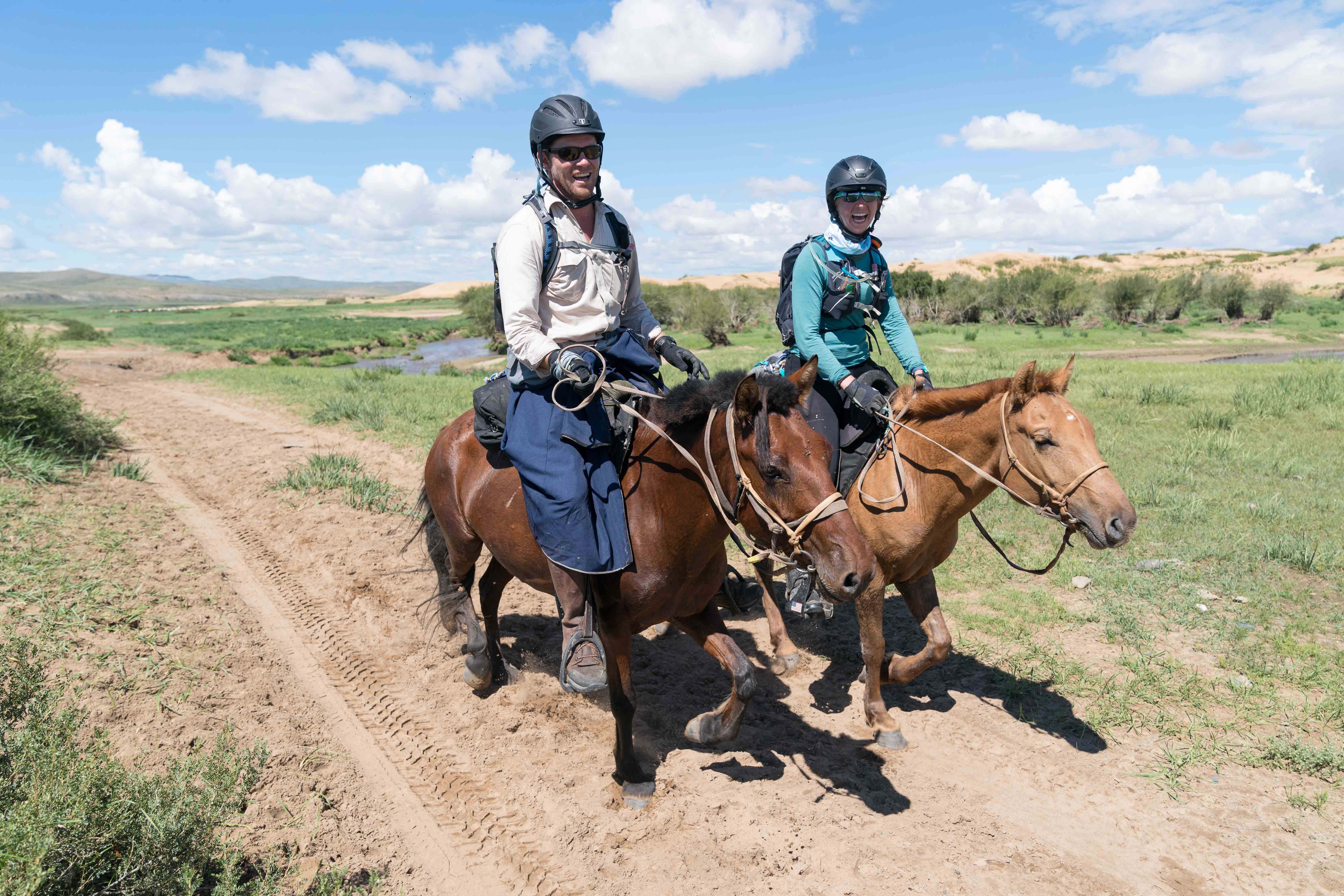
In Mongolia, dogs usually are left to roam around gers (portable dwellings, much like yurts) and livestock, acting as protectors. Most of the time they trot alongside you, barking a very mild warning before returning to the perimeter of their territory with the satisfaction of fending off intruders. But this dog was something else altogether, and it didn’t take much imagination to determine why he had been tied up. Luckily, Mike and I were both on fresh and fast horses, who didn’t need any input from us to get the hell out of striking distance.
Throughout the 600-mile race, we rode a total of 28 horses. Statistically speaking, this means we were bound to get a mix of first-rate mounts, some certifiably insane ones and worst of all, duds. Thankfully our mounts on the leg with the vicious dog were the former, but by the morning of Day 3 we got our first and definitely not last, introduction to the dud category.
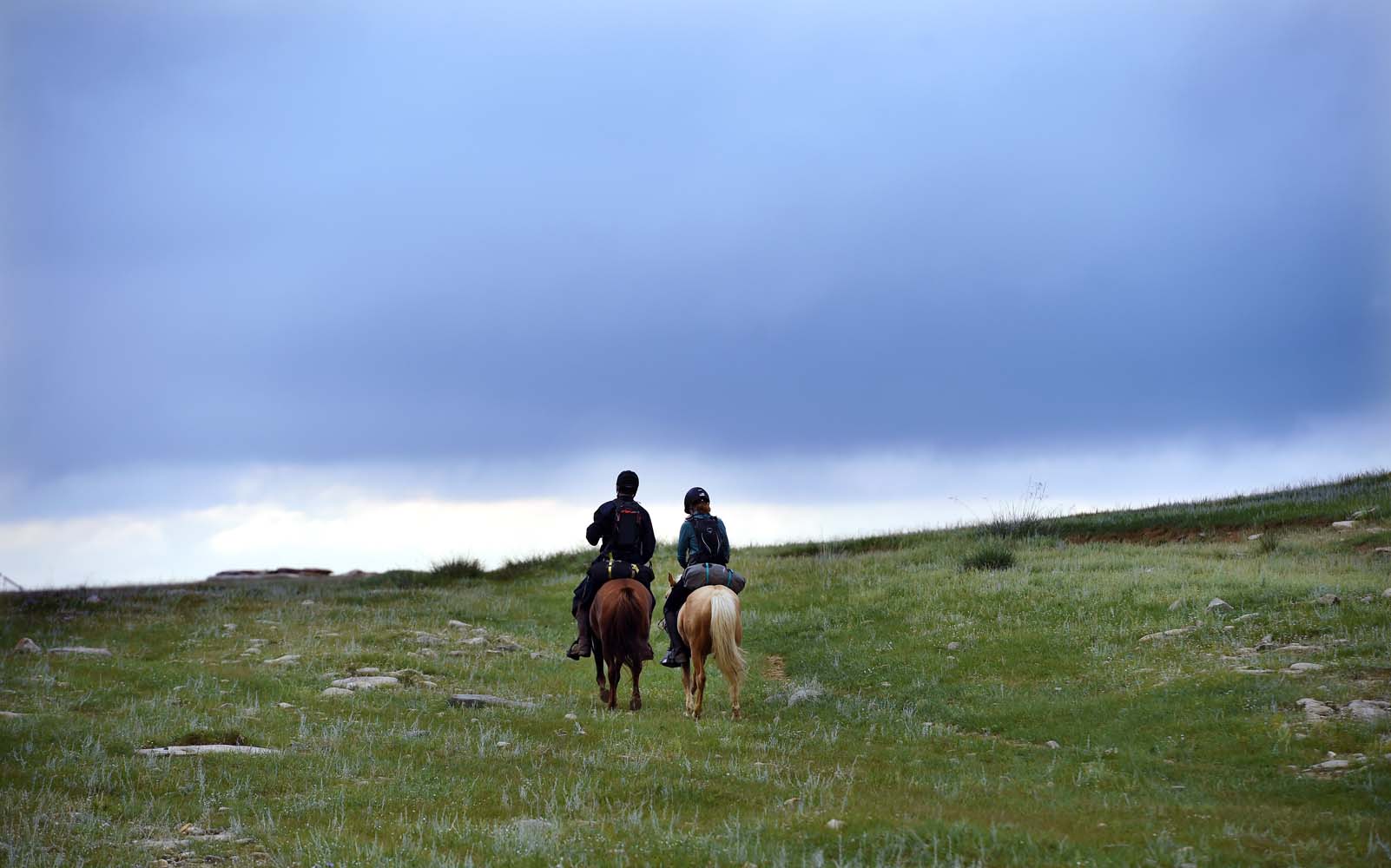
Mike and I shot each other exasperated looks as three big kicks got him about two canter strides before his horse settled back into a listless walk, while mine was content to show off his best impression of a Western Pleasure jog. This might be desirable for a leisurely hack around the stable yard, but in the Mongol Derby it is nothing short of pure agony. Twenty-five miles of coaxing, kicking and “choo choo-ing” (the Mongolia equivalent of a cluck), takes a toll on already exhausted riders pretty quickly.
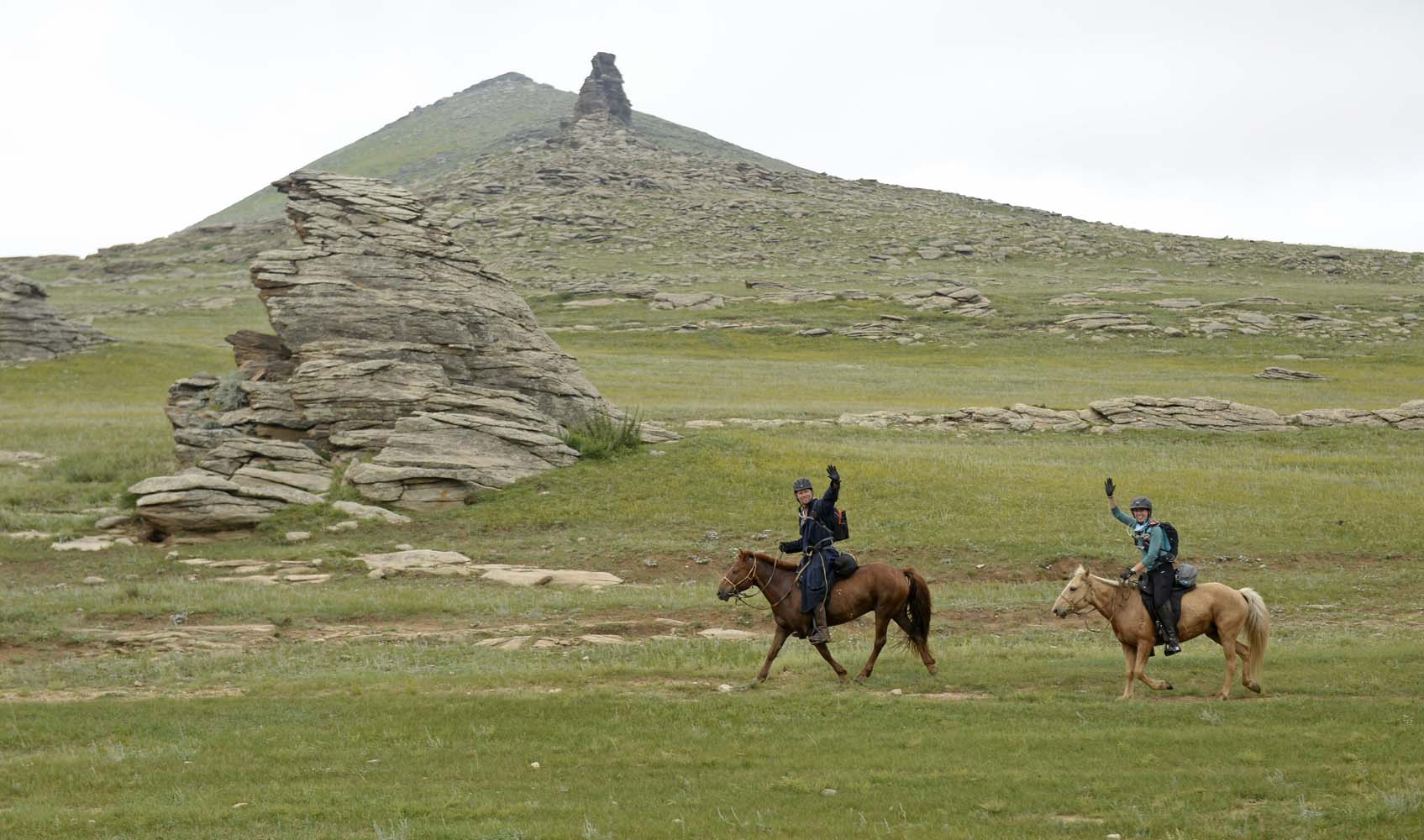
Hearing a sound like thunder behind us, we swiveled to see a large group of riders and horses galloping over the hill, costing us the little bit of a lead we had gained by camping between stations the night before. Mike’s frustration quickly turned to jubilation when he realized the group about to lap us was the polo-playing Archibald brothers from Australia, Rob, Ed and Jack, and their cousin, Henry Bell. Mike had gotten to know the “Archibells” (nicknamed so on the Mongol Derby live Twitter feed) in start camp and they had planned to ride together. The Archibells’ herd of galloping horses gave our two plodders the incentive to get moving that Mike and I could’ve never generated, and we began to close the gap to HS8.
The six us of ended up sticking together, making good time with relatively few hiccups through the rest of Day 3. At the end of the day, we cruised in and out of HS11 with about 45 minutes of riding time left on the clock, passing several riders who were there serving vet penalties. (Horses must all pass a vet check in which the horse must be sound and meet a heart rate of 56 bpm within a half hour of arriving at the station). We ate up the mileage on six well-matched “flyers,” sprinting toward a water source notated on the map in hopes of finding a family nearby to stay with. Our good luck continued as we spotted three gers by the river with less than five minutes of riding time left. Mike presented his note written in Mongolian to see if we could stay, and a shy 14-year-old girl responded in English that yes of course we could, and actually that three of the six horses belonged to her. We spent a serendipitous evening eating, laughing, miming and sipping Mongolian vodka with the family who so generously took us in and helped us care for our, er … their, horses.
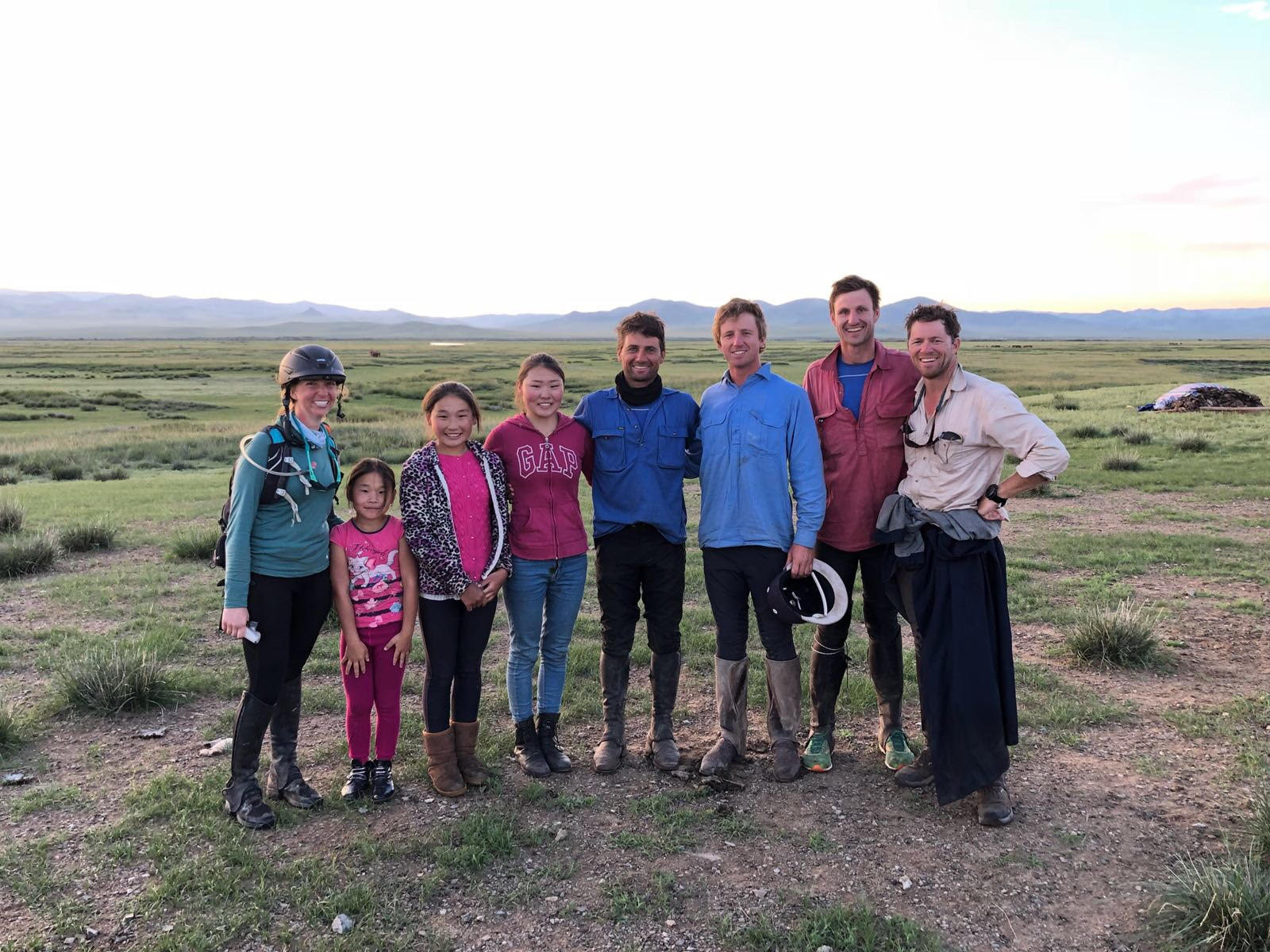
Video Courtesy, Ed Archibald
Video Courtesy, Michael Turner
The Derby has a way of taking riders from their highest high to their lowest low, and we had been running pretty high. The next morning we galloped toward HS12 on well-rested horses and continued moving smoothly through Day 4. And then we arrived at HS14.
It was slim pickings on the horse line at HS14. I settled on a small, scrappy looking black horse after I had pointed to three others that the herder inexplicably shook his head no to. Departing from the horse station, our group of six, usually somewhat harmonious, was in total disarray. My rough and ready horse was bolting to the front and didn’t have much in the way of steering while behind me Henry’s horse—latter dubbed Black Beauty—was bucking and zig-zagging like a spasmodic drunkard, looking like he had never had a rider on his back. Henry rode alongside one of the other horses, and then between two horses to keep him straight and moving forward. The horses settled in and things seemed like they were going to be OK.
But within an hour, our leg went downhill quickly. Black Beauty’s antics were replaced by the much worse dogged persistence to not move a muscle. He made the horses that Mike and I rode on the morning of Day 3, who arrived at the horse station with comically low heart rates of 44 (mine) and 46, look like Man O’ War and Secretariat.
You know the saying “you can lead a horse to water, but you can’t make him drink”? Well that definitely applies in the Mongol Derby, but more like, “you can select a horse off the line, but you can’t make him run.” We had already tried putting Henry’s horse in the middle of the group, ponying him off of one of the other horses, encouraging him from behind—all of which worked—but only for a few hundred meters. My five riding companions, all non-smokers, divvied up the cigarettes meant as gifts for the herders and began anxiety-ridden chain smoking as we discussed what to do next. Should Henry push his “need assistance” button on his tracker, thus prompting help from the Mongol Derby crew and an hour penalty? Should we keep at it and hope we could drag Beauty into the station in time? Should we take off his tack, smack him on the rump, look the other way and pretend like we lost him?
We noticed a ger at the bottom of the hill, and thought if we could make it there, maybe we could recruit a herder to do a little horse whispering, so we made our way down. Soon Henry was sitting on the back of a motorcycle, hanging onto his saddle with one arm and clutching the strong Mongolian man sitting in front of him with the other as they rode up the hill. We followed, ponying along Henry’s loafing black gelding.
Once at the top of the hill, we bid the Good Samaritan farewell and Black Beauty, well-rested from making his way to the top of the hill without the added weight of saddle and rider, was re-saddled and re-mounted. But he refused to move forward down the hill. Instead, Jack unsaddled him and began backing him down the hill, which much to our delight, seemed to work. Ed, still mounted on his horse, strapped Henry’s saddle to himself, while Henry rode Jack’s horse and juggled his saddle bag.
Jack’s strategy quickly floundered, but before long we devised new one. Another herder with a motorbike appeared so Jack hopped on behind, ponying Black Beauty off the back. Whooping and hollering, we followed along, taking our time with Ed and Henry’s added baggage. We crested a hill and saw Jack and the herder off the bike with—no surprise—the horse standing still. The herder dragged an aloof Black Beauty up to Ed’s horse, tied the reins around Ed’s horse’s neck and without a word set off on the bike with Jack toward the horse station.
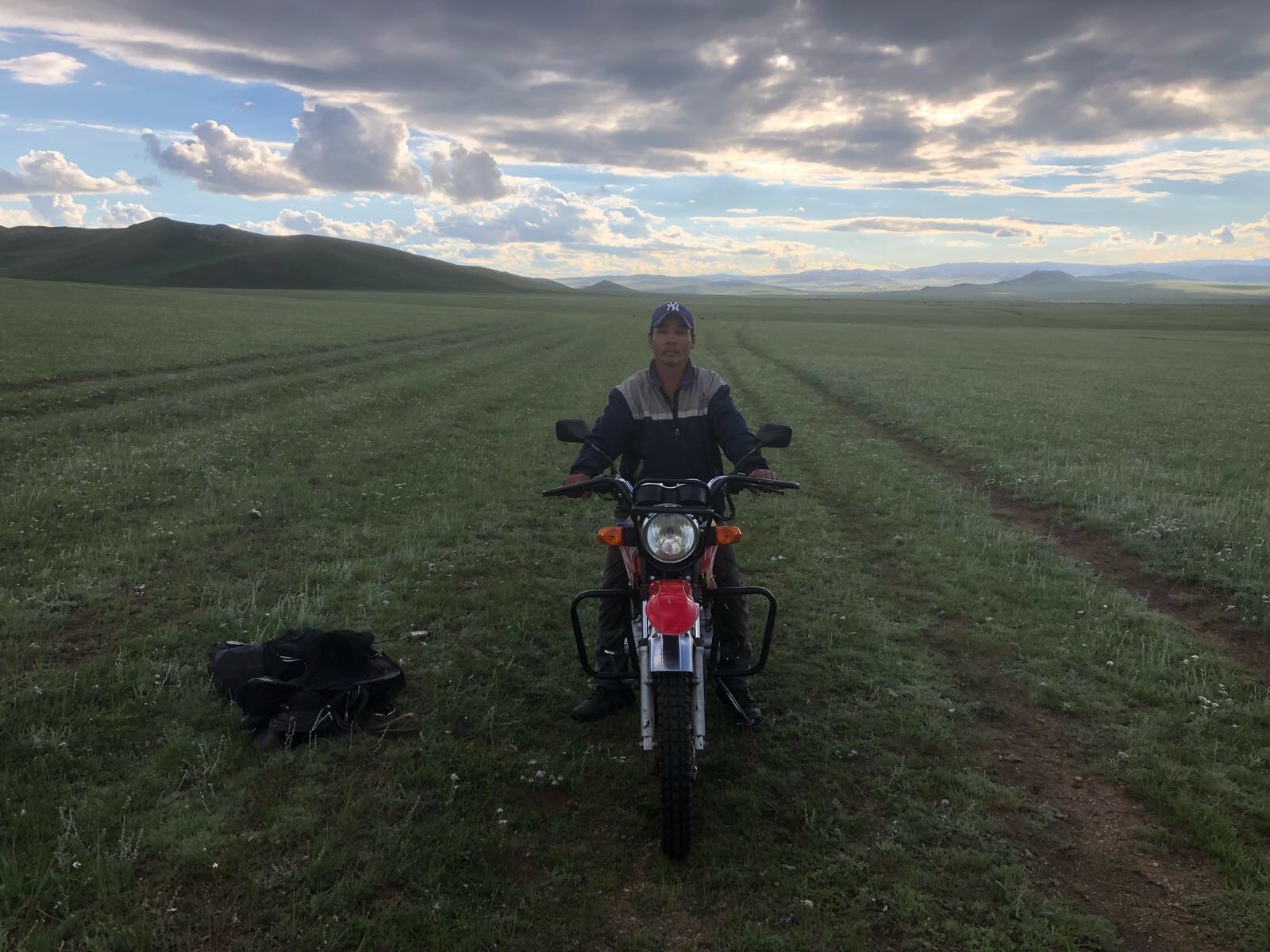
It was the Mongolian herder horse whispering that we had all been waiting for. Just like that, we were off with Black Beauty happily trotting alongside Ed’s horse. We exchanged puzzled glances, not entirely sure how this was different than ponying him but, honestly, we could care less.
With a sigh of relief, we rode into HS15, passed our vet checks (even Ed’s horse who had the hardest job of all—towing the dud) and realized we didn’t have enough time to ride out. I think we were all a little secretly relieved to be done for the day. We hobbled down the horse line to select our mounts for the next morning. I was eyeing a flashy looking paint, when the herder and translator walked over to me. The herder pointed at another horse that I had already passed by. Even from where I stood, I wasn’t particularly impressed by him. I pointed at the paint and made a “is he fast?” motion with my hand. Conferring with the herder, the translator told me that the paint was a little faster than the horse the herder pointed to, but very wild. Again, I eyed the dull-looking horse that the herder seemed to be pushing on me. For an instant I thought about our miserable leg with Black Beauty, looked the translator square in the eye and said, “I’ll take the paint.”
Read Part I, ‘Everybody Has a Plan Until They Get Punched in the Mouth,’ here.







